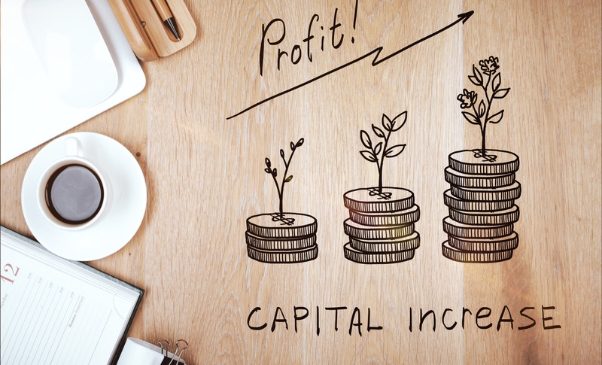A Beginner’s Guide to Market Capitalization: What It Is and Why It Matters
A company's market capitalization is a big part of how investors decide how much it is worth. The amount of money could be made if all of a company's shares were sold and the company went out of business. A company's market capitalization is important because it gives investors a way to determine how much it is worth. It also shows how big and important the company is compared to its competitors, which is useful evidence. A high market capitalization is a sign of a big, well-known company, while a low market capitalization is a sign of a small, little-known company. Investors and analysts look at a company's market capitalization to decide if it's a good place to invest their money.

What do we know about Market Capitalization?
Capitalization, which is sometimes called "market cap," is found by multiplying the current price of a share by the number of shares that are still in circulation. You can figure out the value by multiplying the current market price of a share by the number of shares still in circulation. A company's market capitalization is an important metric that can often tell you about its size and health. It is a standard that can be used to compare one company's success to that of its competitors. As the company's market capitalization goes up, so does the value of each share of stock.
Where is there the biggest difference between cash flows and market value?
Even though cash flow is a better sign of how profitable a company is, its market capitalization may be the best way to determine its worth. Cash flow is the amount of money a business or organization consistently brings in through its operations. Not only is sales income counted here, but income from other sources, like interest and dividends from investments. In addition, it considers the costs of running the business, such as rent and salaries.
The sum of a company's share prices is its market value, also called market capitalization or market Cap. If you multiply the price per share by the total number of shares, you can figure out how much the company is worth. A company's market capitalization is one of the best ways to tell how big and liquid it is (or simply "market cap").
How You Can Use the Market Capitalization Ratio
Market capitalization ratios can show how much a company is worth. You can easily figure out the market capitalization ratio by dividing the firm's outstanding shares' total market value by the business's total market value. A percentage will be given that shows how much the business is worth now. With this ratio, you can compare the value of your business to that of your competitors. In addition, it can help you figure out which stocks are cheap and which are too expensive.

How to Calculate Market Capitalization
A company's market capitalization can be found by multiplying the current value of the company's shares by the current price per share. Because 1,000,000 shares worth $10 add up to $10 million, the total amount is $10 million. A company's market capitalization shows how much it is worth. This is directly related to how interested investors are in the company. When investors use this indicator, comparing companies in different markets and industries will be easier.
Other Considerations in Assessing a Company's Value
Money is just one thing to think about when trying to figure out how much a company is worth. A company's total value is based on many things, such as its market share, growth potential, and financial health. Each of these things is very important to consider when trying to figure out how much a company is worth on the market. It would not be right to value a company based only on its market capitalization; this is just one piece of information that could be considered.
Disadvantages of Market Capitalization
There are some good things about a company's market capitalization but also some bad things. Inaccuracy is a big obstacle to getting past it. If the data used to calculate a market cap is wrong, then the value calculated from using that data will also be wrong. The market capitalization will be off if some information is missing or wrong.
Another problem is that all that is shown is the company's current market value. This does not consider whether or not the company's market value could go up or down in the coming years. This shows that a company's market capitalization may not accurately predict how well it will do in the long run, even though it can tell you a lot about its finances.
Advantages of Market Capitalization
One of the best things about market capitalization is that it lets you compare companies in different industries. A company's market capitalization takes into account all of its outstanding shares. This makes it easy to compare one company's performance to that of another. If the stock prices of two companies are the same, but one has issued more shares than the other, the first company is likely to have a larger market capitalization than the second. With the information here, investors can quickly and easily determine which businesses are growing and how big and wide they are.
Examples of Companies by Market Capitalization
Customers of some companies can get lessons on market capitalization from those companies. The market is shown by how much all of these different businesses are worth on the market. Apple Inc. is a good example of a company with a large market capitalization since its market value is more than $2 trillion. These kinds of companies are called "small caps." These are just a few examples, but they show the difference in size between large-cap and small-cap companies.
Conclusion
The main idea behind market capitalization is that it is a way to determine how much a company is worth. This is done by determining how much money each share of a company's stock is worth based on the total number of shareholder shares. Regarding capitalization, the market size is based on how much this money is worth.
Investors put much weight on a company's market capitalization because it clearly shows how big and valuable the company is. It can examine how a company has changed or how different companies compare. Even though the market size is a very important factor, it should not be the only one investors think about. These are just a few examples. Another is how much money the company makes and how much it sells.



